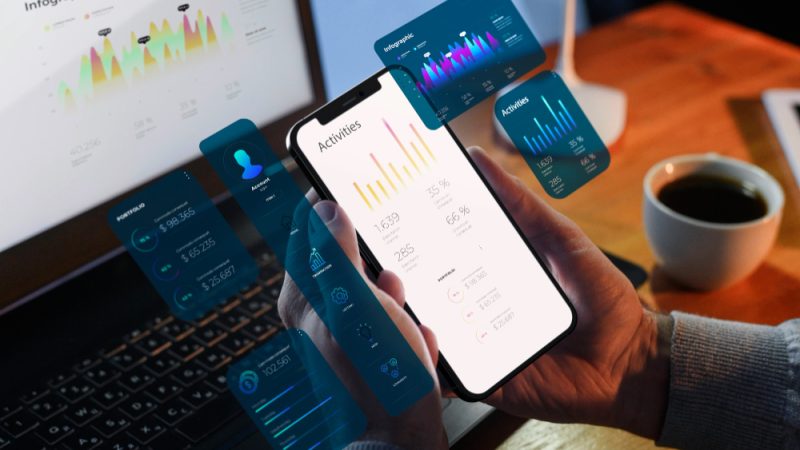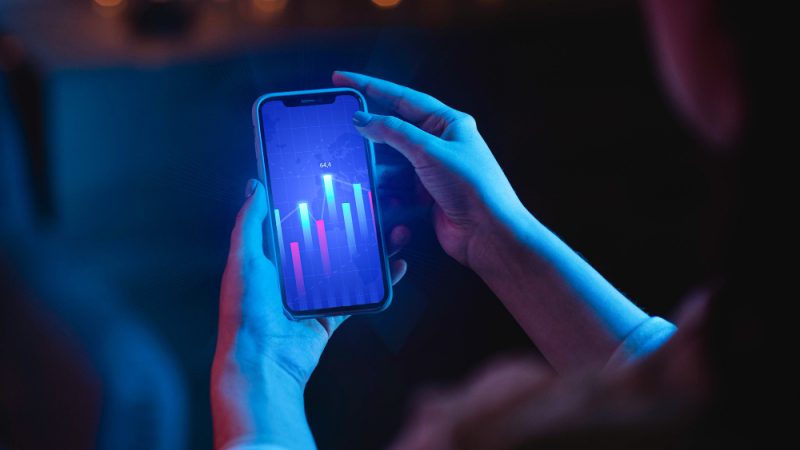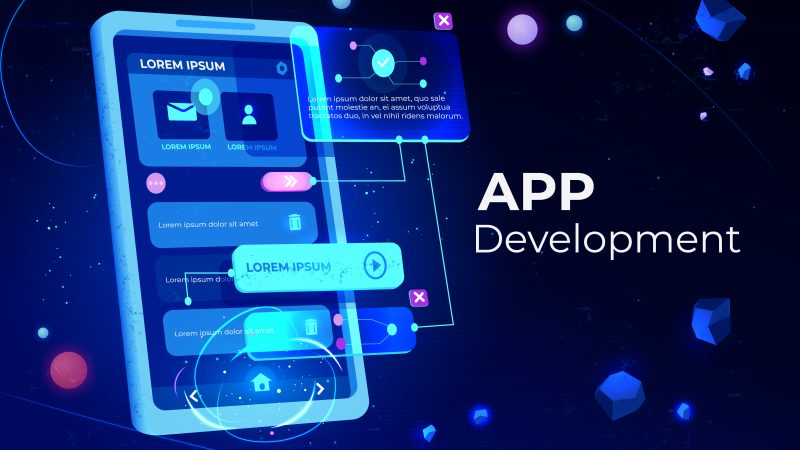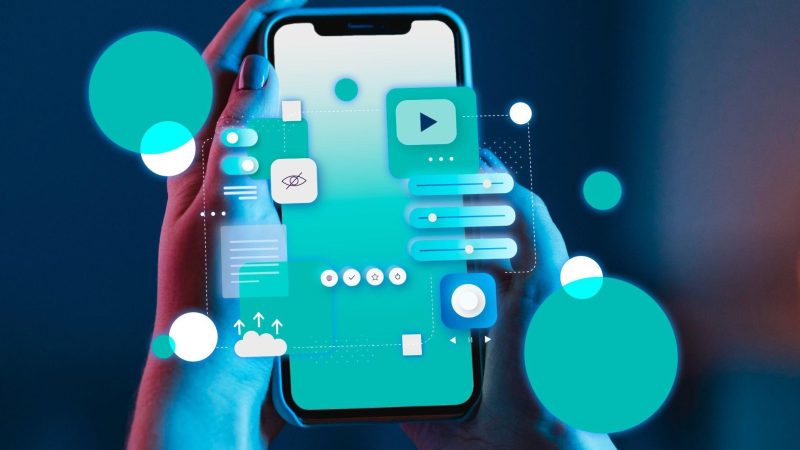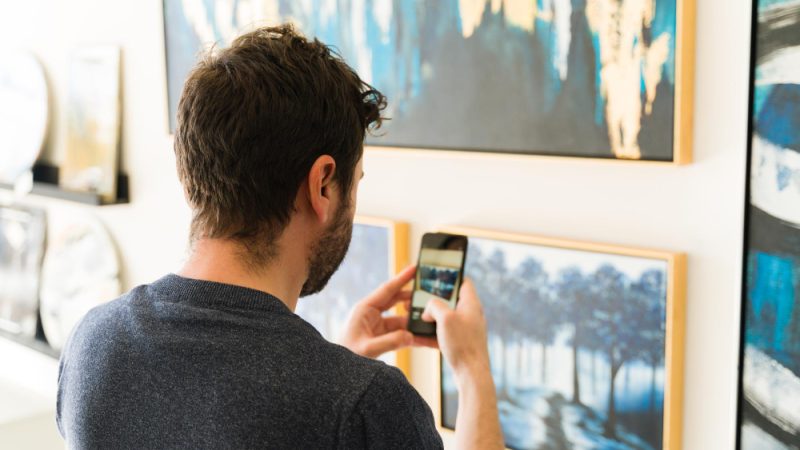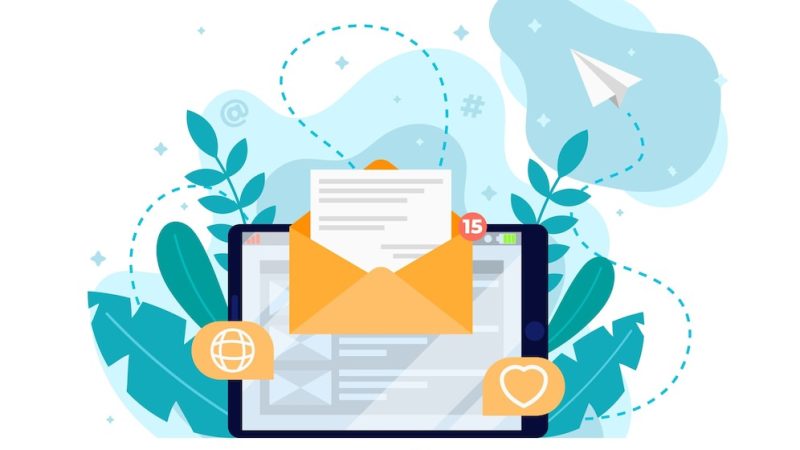Step-by-Step Guide to Blockchain Healthcare Application Development

Blockchain is a framework for keeping data in a way that’s nearly hard for it to be modified, manipulated, or copied. All that’s required to use blockchain technology is a network of computers worldwide to replicate and disseminate a digital ledger of all the transactions that have ever taken place.
Each “block” in a blockchain is a collection of related transactions. Once a block’s validity has been established, it is appended to the end of the chain of previously validated blocks. This approach is called Distributed Ledger Technology (DLT), where the entire database is administered by numerous users, making the blockchain decentralized. Decentralization refers to any network free of central supervision, such as a bank or a government.
How is Blockchain Work
Here’s an example of how blockchain is used to verify and record Bitcoin transactions.
- One might invest in cryptocurrency by purchasing Bitcoin or Ethereum.
- The transaction data is relayed via Bitcoin’s decentralized network of nodes.
- The nodes ensure the validity of the exchange.
- Once the transaction has been validated, it will join a growing block and be added to the chain of previously validated transactions.
- Once a block is finalized, it is encrypted, and the associated transaction record becomes immutable on the blockchain.
Due to its open nature, the blockchain may be accessed by any Bitcoin holder. Although it may be impossible to determine who is behind a given account, the ledger will reveal which accounts are involved in blockchain-based exchanges. In public blockchains, any user with enough computing capacity may function as a node to approve and record transactions.
Features of Blockchain
Some of blockchain’s most outstanding qualities are outlined here.
Data immutability: The topmost characteristic is the immutability of data, which prevents any data from being damaged. This is achieved by having a replica of the ledger stored on each node in the network. As a result, data modifications require consensus from all nodes. Because of this, blockchain can be trusted and is open to everybody.
Decentralized: Blockchain technology is decentralized, which means it is not governed by any central body, organization, or person. Instead, a network of nodes oversees the entire exchange.
Single source of truth: The distributed ledger in a blockchain system is the sole reliable record of transactions. You can get all the information you need on who owns what and when in one convenient location.
Transparency or provenance: Blockchain technology allows for full auditability of all transactions, both physical and digital, from beginning to end.
Consensus algorithm: All participants or nodes must agree to follow the same rules before a transaction is approved and stored on the blockchain.
Blockchain App Development in Healthcare
Here, we’ll explain how you can participate by creating your blockchain-based software.
1) Conceptualization
You need to know who you’re doing the app for and what problems it should answer before you can go on to the more concrete aspects of making the app. At the same time, it’s crucial to highlight the optimal contexts for implementing blockchain systems.
In the case of the creation of medical applications, blockchain technology should be utilized:
- Safeguarding sensitive information: In 2020, a healthcare provider would lose an average of $7.3 million due to a single data breach.
- Quicker and more accurate identity verification: This can revolutionize industries like healthcare by streamlining processes like prescription filling and patient record matching. Further, blockchain can aid in the struggle against product expiration and counterfeiting.
- Automation of routine business procedures: The blockchain really comes into its own when it’s used to automate routine procedures like those found in supply chains. But it may also refer to the computerization of insurance procedures, financial dealings, bookkeeping records, etc.
2) Creating an Adaptive User Experience
It’s important to give your blockchain-based healthcare app the same level of care and attention to detail as you would any other application.
Here are some guidelines to follow as you go about the process of doing so:
- Find design flaws, get rid of extra steps, and make the interface easy to use by focusing on the user experience as a whole.
- Display the most pertinent data up front: If you’re making a fitness app, the first screen should display your current caloric expenditure and scheduled workouts. If this is a pill reminder app, the initial screen should show the next scheduled dose along with a list of medications and a countdown timer.
- Make it responsive – It’s important to consider how your application will appear across various screen sizes, not only the visual aspect. If you’re making an app for Android, this is crucial.
3) Deploying the MVP Software
It’s natural to want to do your best work from the moment you design your own software. However, you’re mistaken. Instead, you should focus on the most important aspects of the concept and create a minimum viable product (MVP) to test the idea and get feedback as soon as feasible. This will help you adjust your service to meet the needs of actual customers.
4) Inspection and Assessment
If you want your blockchain-based medical software to be available on the Google Play Store and the Apple App Store, you must ensure its quality via extensive testing. The app must be stable, safe, and able to manage high volumes of users in order to be accepted in such markets. In the case of medical apps, furthermore, adherence to the norms and legislation for the delivery of offline and/or online medical services is necessary.
5) Launch and Deployment
The last step in building blockchain-powered healthcare software is releasing it into production. Publication in the Google Play Store and the Apple App Store follows the deployment of all required services (servers). The second requires that you:
Sign up for the Google Play Console and the Apple Developer Program.
Complete the appropriate forms so that the application may be made public.
Costs to the site: Apple’s annual fee is $99, while Google’s is $25.
Conclusion
This a reminder that if your app claims to have any health benefits, such benefits must be shown. If your service is similar to AcneApp, it will be removed. According to the app’s developers, it “eliminates the p-acne bacteria (the major cause of acne) and decreases spots on the skin by 76%” by reflecting blue light off the screen of a smartphone. The Federal Trade Commission (FTC) banned the product and penalized the makers for making fraudulent claims. All such services were eventually disabled.
Author’s Bio:
My name is Joseph M. Witt. I am writing blogs related to various blockchain topics and other technologies including Blockchain Healthcare Application Development, Blockchain elearning App Development and many more.
Sincere & Enthusiastic! Proficient in Blockchain Content writing. Admiringly creative with thoughts about the latest advancements. Dwelling in the tech world with my glasses. You can generally find me either understanding or playing with the latest technology.

